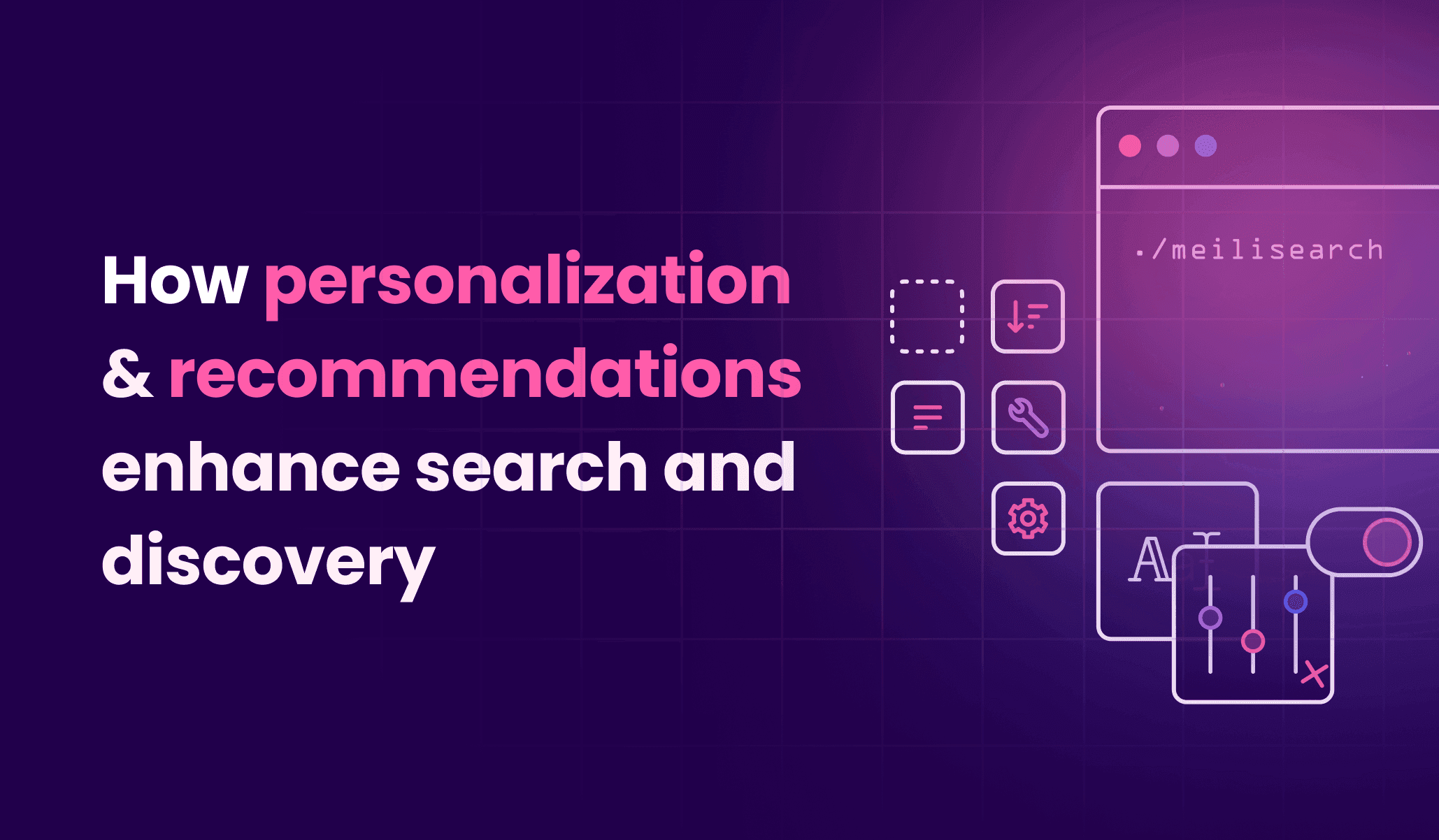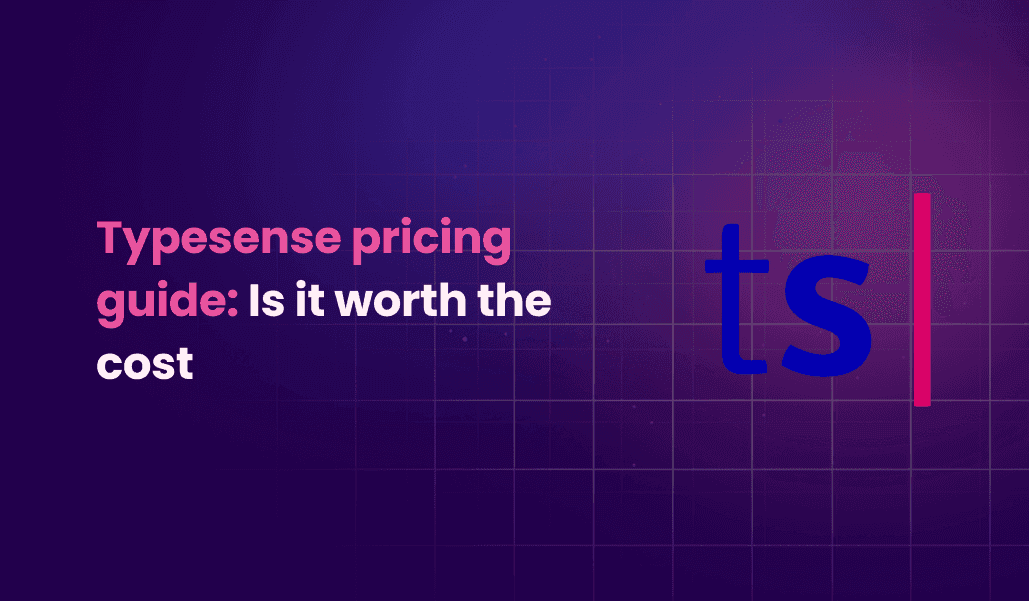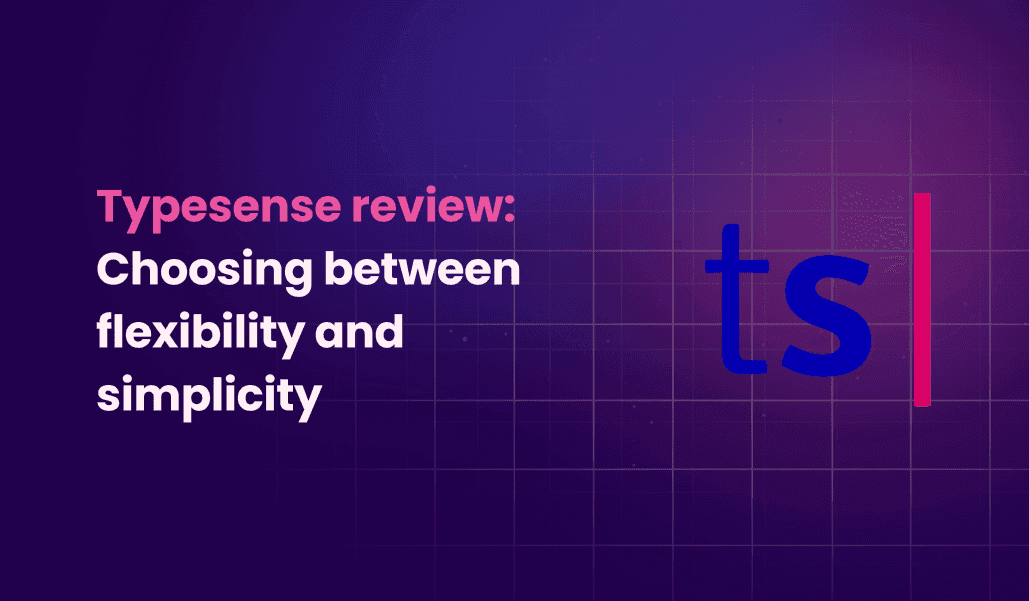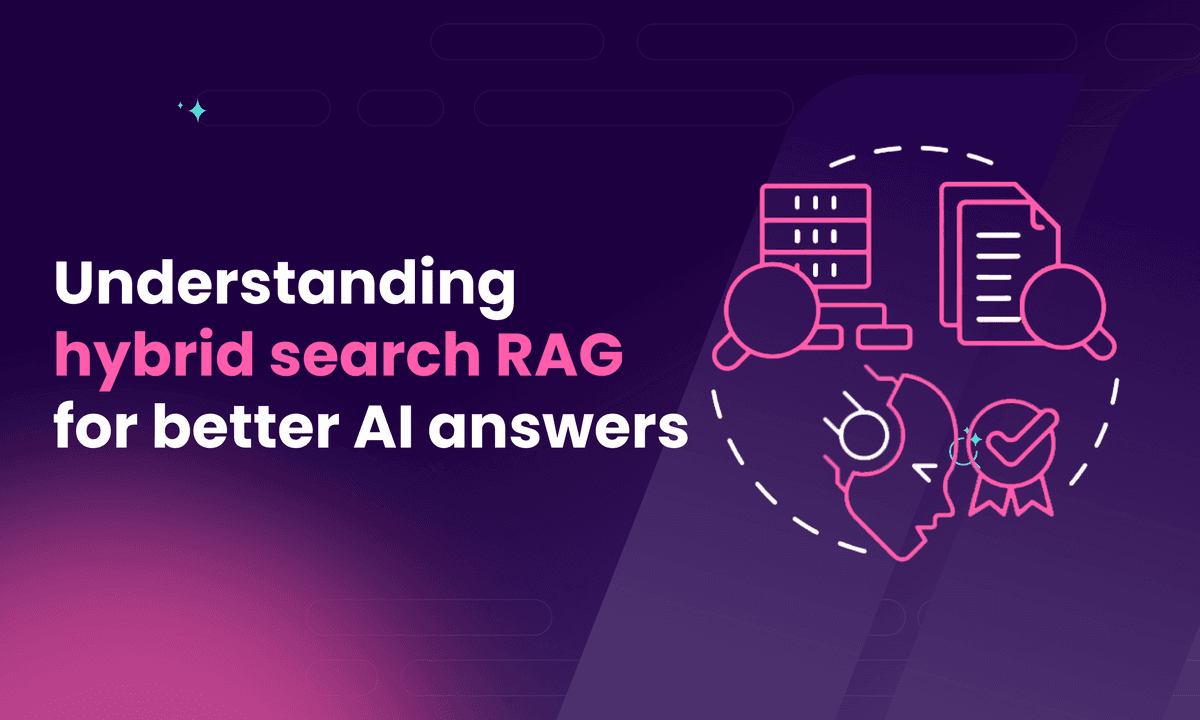How personalization and recommendations enhance search and discovery
Learn to boost search efficiency with personalization and recommendation strategies with case studies and tips.

You’re going home for Christmas and just learned that your auntie will be joining. Waiting for your flight home, you’re browsing your favorite online shop—hoping to find the perfect last-minute gift. But your phone says you’re in Bali, so the website displays in Indonesian, and you don’t understand a word.
Worse, there isn’t a single Christmas-y thing on the page. It’s December 15th. You can already picture the awkwardness of arriving empty-handed in front of your aunt. Mild panic.
You close the tab and start frantically googling “quick delivery Christmas gifts.”
This is the cost of getting personalization wrong. The landing page content was not relevant enough, resulting in a lost customer. Content relevancy is the literal difference between a conversion and a drop-off. Personalization matters: studies show 76% of users are frustrated when websites lack personalization.
AI-powered search engines offer developers the tools to solve this problem. They don’t just help users find what they’re looking for—they empower them to discover. In this article, we’ll explore how search engines enable developers to build personalized recommendations to drive engagement and conversion.
We’ll start by defining what personalization and recommendations are, then we’ll examine real-world implementations from leading companies, and finally, we’ll dive into how to use a search engine to build personalization, recommendations, and experiences that seamlessly combine both.
What are personalization and recommendation?
What is personalization?
Personalization is a user experience pattern that offers customized experiences to users or website visitors. By tailoring the experience to the user, it becomes more intuitive, familiar, and engaging.
For example, a common personalization feature is displaying a website in the user’s native language based on browser or device settings. Users are more likely to interact with a site presented in their preferred language, even if a translation option exists.
In search, personalization often includes displaying recent searches. Platforms like Facebook and Google use this to help users quickly access relevant content. For instance, a user opening the search bar can see their most recent searches, accelerating access to relevant pages.
Personalization relies on user-specific data such as configured preferences, or inferred information like IP addresses, default browser language, or device type. This data enables a customized and user-friendly experience.
What are recommendations?
Recommendations are a form of customization designed to enhance user engagement and drive conversions. They suggest content or products related to what the user is currently viewing or interacting with.
For example, in ecommerce, a user searching for a MacBook might see recommendations for other MacBook models or different colors of the same product.
The purpose of recommendations is to improve discovery by narrowing the user’s search and helping them find relevant items. Unlike personalization, which uses user-specific data, recommendations focus on item attributes like category, type, or popularity.
By basing suggestions on current interactions, recommendations effectively guide users to additional resources or products of interest.
Personalization vs. recommendation: Key differences
Personalization and recommendation serve distinct purposes but work well together to improve user experience:
-
Personalization: Relies on user-specific data (e.g., location, preferences) to create customized experiences that feel intuitive and engaging. It enhances familiarity by tailoring content to the individual.
-
Recommendation: Uses content-specific data (e.g., product details, trends) to suggest related or similar items. It fosters discovery by guiding users to explore new options.
While personalization focuses on the user, recommendations center on the content. Combining both approaches often delivers the best results, balancing familiarity with discovery to meet diverse user needs and business goals.
Blending personalization and recommendation strategies
To deliver exceptional user experiences, many platforms blend personalization and recommendation. This approach combines the benefits of both patterns to enhance search and discovery.
For example, an ecommerce platform might personalize search results to prioritize products available in the user’s country. At the same time, it could recommend products popular in the region. This hybrid approach not only helps users find what they need faster but also introduces them to new options tailored to their context.
Hybrid search engines like Meilisearch enable developers to combine user-specific filters with vector-based recommendations. This simplifies implementation, reduces time-to-value, and creates scalable, engaging search experiences.
Case studies of personalization and recommendations for search and discovery
In this section, we analyze how leading platforms implement personalization, recommendations, and hybrid approaches to enhance user experience and drive engagement.
Examples of personalization
Notion: “Recently visited”
Notion displays a “Recently visited” section on its homepage, using the user’s activity history to surface relevant content. This feature improves activation by making it easier for users to find relevant pages.

It makes a lot of sense for a productivity app as there are many cases where users might want to come back to previously seen content. They might want to continue working from where they left off, or they need to check again what decisions were made in a meeting they previously attended. This app search implementation is thus particularly well-suited for a home page.
Reddit: “Because you visited this community before”
Similarly, Reddit suggests communities to join based on the user’s activity history. The goal here is to improve feature adoption.

This implementation helps promote joining communities, a key feature of the app. For users, this improves the customization of their feed. As a result, it enables them to discover more content they might be interested in, leading to sustained engagement and increased retention.
X (formerly Twitter): “What’s happening”
X personalizes trending content based on the user’s location. This makes the information more relatable to the user and drives greater engagement.

In this example, X gives users access to top trending content. Location plays a significant role here, as someone living in Brazil might not be interested in what’s happening in Norway. By filtering by geography, X ensures the content is relevant to the user and fulfills its promise of letting users know what is currently happening. This increases engagement because users are suggested content likely to interest them.
Examples of recommendations
Netflix: “Because you liked this”
Netflix implements recommendations in its application by leveraging user ratings. The objective is to improve content discovery for the users by suggesting similar content and thus driving continued engagement.

This is a case of recommendation being based on the user’s interaction with the product. In this case, Netflix uses the user’s rating of another item to suggest similar content. This enables the user to find more of what they like. This approach has proven results since the company reported that 75% of what users watch on Netflix comes from recommendations.
This approach is particularly effective because the recommending system relies on a highly trustworthy source: the user input. For the user, it enhances their experience and demonstrates the value of using the Like feature. This creates a virtuous cycle of increased adoption of other core app features, further improving the value for the customer.
Amazon: “Customers who bought this also bought”
Amazon implements a different system of recommendations by suggesting complementary products based on purchasing behavior data. The goal here is to increase cart size and improve conversion.

In this example, the recommendations are not only based on the item properties (that is, the product the user is viewing) but also on the purchasing behavior of all Amazon users. The company leverages its business analytics to suggest products that are commonly bought together.
This approach contrasts with the traditional recommendation of similar products helping users decide between alternatives. It brought significant outcomes, with as much as 35% of Amazon sales coming from recommendations. The pattern has now gained popularity and has become a staple of ecommerce search.
Spotify: “More by this artist”
Spotify implements recommendations on the artist page, suggesting other albums by the same artist. The objective is to enhance content discovery and sustain engagement.

This is the most simple approach to recommendations, using an item—in this case, the current album—to suggest related content that the user might engage with. Here, they are suggesting other albums from the same artist. This can be declined using any property of an item, like release year or genre.
In the screenshot, albums are not sorted by chronological release. This suggests they might be ranked based on current listening trends, user behavior, or a combination of both to maximize the likelihood of user interaction. This approach supports user activation through enhanced content discovery, helping users get more out of the product and ultimately improving retention.
Examples of blended approaches
Netflix: “Top 10 TV shows in your location today”
Netflix creates engaging recommendations by combining usage trends data with location-specific personalization. The objective is to further increase activation.

Indeed, filtering the trends to what’s trending specifically in their region creates an even more tailored experience. This can play on the fear of missing out and encourage viewers to stay up-to-date with local trends. More importantly, it’s likely to be more interesting to them, as cultural groups often share similar tastes and consumption habits.
This site search pattern is most commonly implemented in applications with a big content catalog. It leads to enhanced content discovery for users and greater user activation thanks to an improved ability to find content they’re likely to engage with.
Reddit: Search dropdown
Reddit’s search dropdown helps users get started by blending search history and trending content recommendations to drive engagement.

The search dropdown contains two sections: search history and trends. Compared to Notion, Reddit does not list post history here, but the recently visited communities. By inciting users to check back on the communities, they might discover new relevant content. However, the daily trends sections recommend posts based on global user trends, for a more direct activation.
Which tool to build personalized search and AI-powered recommendations?
Having seen how companies implement these techniques, let’s explore the underlying architecture that makes them possible.
Essential feature requirements
A good search experience is crucial for converting users. It can be the difference between a complete bounce and a user converting in a couple of clicks. When implemented well, a robust search and discovery mechanism can become a central part of the user experience. Consider platforms like YouTube, Amazon, or Slack—these apps rely heavily on search to help users unlock the full value of their products.
However, implementing search can be challenging when trying to mix and match different tools to address the job at hand. To optimize the search and discovery experience holistically, it’s best to rely on a dedicated search engine like Meilisearch. In addition to providing advanced full-text and AI-powered search, Meilisearch offers dedicated front-end libraries for implementing common user experience patterns seamlessly.
For powering recommendations, it’s essential to use a search engine that supports storing and searching vectors. Vector embeddings are mathematical representations of data, allowing similarity searches to retrieve similar documents within a database. This capability enables features like “Because you liked this” or “Similar-looking products.” Combined with hybrid search, developers can still use filters, sorting, and other full-text search features to deliver a fully customizable recommendation experience.
Meilisearch brings these capabilities together, making it easier for developers to create intuitive and impactful search experiences that drive user engagement and conversion.
Using a search engine for personalization and recommendations
Meilisearch comes with a broad range of capabilities, enabling developers to build experiences that blend personalization (user-specific results) and recommendations (item-focused insights). Let’s take a look at how some of these features can be implemented.
Implementing personalization requires significant front-end customization to create a tailored user interface. This can include setting default filters based on region or user preferences and leveraging search history for more personalized results. These elements can be more seamlessly integrated when using a dedicated library designed for this purpose.
By utilizing a search engine like Meilisearch, developers can benefit from a compatible collection of front-end components, including specific integrations for React and Vue. This approach helps save development time, reduces maintenance costs, and enables the creation of world-class user experiences with minimal effort.
How to implement personalization and recommendations
Recommendations for similar items
This scenario is the same as Netflix’s “because you liked this” example. Recommendations of similar items can achieve different goals. In e-commerce, it allows users to discover alternatives, helping them find the ideal product for their needs. On media platforms, it is often used to re-engage users by suggesting content similar to what they already engaged with.
In the Meilisearch Movies Search demo—an application that helps users find platforms to stream or buy movies—we implemented this pattern to offer suggestions of similar movies. For example, in the screenshot below, you can see which movies are similar to “Moana 2.” Using Meilisearch, this feature can be implemented using the similar documents API.

Consult the open-source repository for further details about the implementation.
Search personalization with recent searches
As seen in Notion’s “Recently visited” example, a common personalization implementation uses the user’s activity history to display a list of recent searches. For instance, a SaaS might want to include a list of the user's previous searches in the search dropdown to enable them to quickly find content they’ve already searched for.
When building with Meilisearch, this can be implemented in the front-end application using Meilisearch’s autocomplete client alongside the autocomplete-plugin-recent-searches library. Here is an overview of how Autocomplete interacts with your front-end application.

Search personalization with localized content
This example is similar to X’s “What’s happening” section which involves tailoring content based on the user’s location. With Meilisearch, localizing search content is as simple as applying a filter. This filter can be hidden from the user or set as a default option that they can adjust through the user interface.
Meilisearch offers a variety of filtering capabilities to fine-tune search results. For geospatial content, such as restaurant addresses, localization can also involve sorting content by proximity to the user. Meilisearch’s sorting features and geospatial search capabilities make this straightforward.
Consult the GitHub repositories for the ecommerce demo and geosearch demo for more insights about the implementation.
Recommendations based on trends
This example is similar to Reddit’s “Trending today”. To help users get started with an application, recommending trending content is a good way to facilitate engagement. These trends can be derived from your search analytics or other business metrics that you monitor or collect manually.
You can build a pipeline using this data to update a Meilisearch index accordingly. Here is an example implementation that uses website traffic to inject a popularity field in an index.

Offering recommendations is then as simple as performing a search against the relevant index. To integrate these recommendations directly into the search dropdown, developers can leverage Meilisearch’s autocomplete client library.
Personalized search: Driving engagement through familiarity and discovery
Personalization and recommendations are proven user experience patterns that enhance the customer journey by tailoring interactions to individual needs. Personalization leverages information about the user—such as their preferences or past behavior—to create a familiar and engaging experience. Recommendations, on the other hand, rely on data available to the company—like content catalogs or buying trends—to suggest items with high conversion potential.
These strategies are widely adopted by leading online businesses, as demonstrated in case studies from industries such as digital commerce, social networks, and streaming platforms. Companies use these methods to boost engagement, increase customer satisfaction, and drive business outcomes.
By blending personalization and recommendations, you can create hybrid experiences that provide the best of both worlds. With modern search solutions that incorporate full-text search, vector search, and hybrid search, you can tailor results to match user intent while optimizing content discovery. Search engines enable these patterns, improving both the search functionality and the overall user experience of your website or application.
Meilisearch offers a fast, developer-friendly solution to build hybrid search that scale with your business. Get started with a free trial today, or connect with one of our experts to learn how hybrid search can transform your customer journey.


